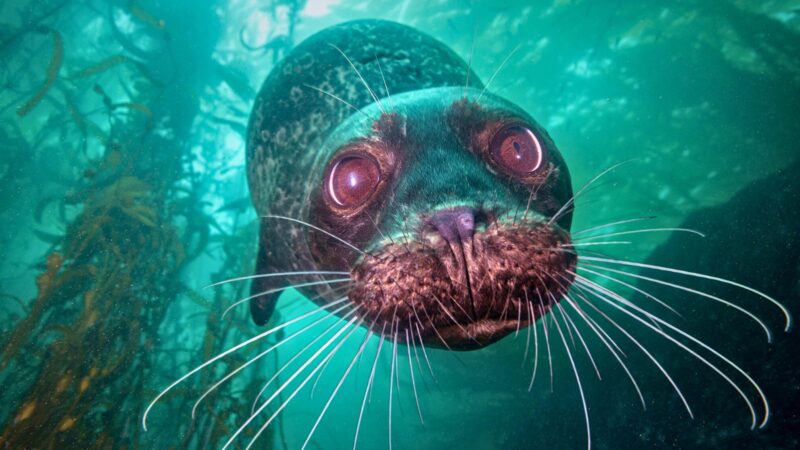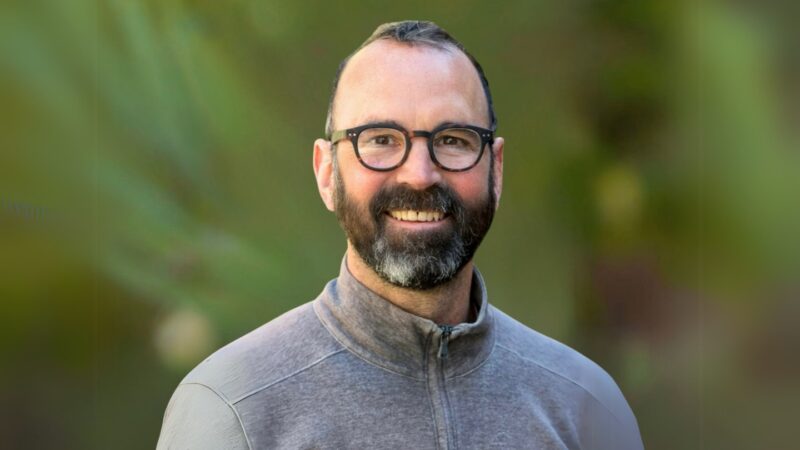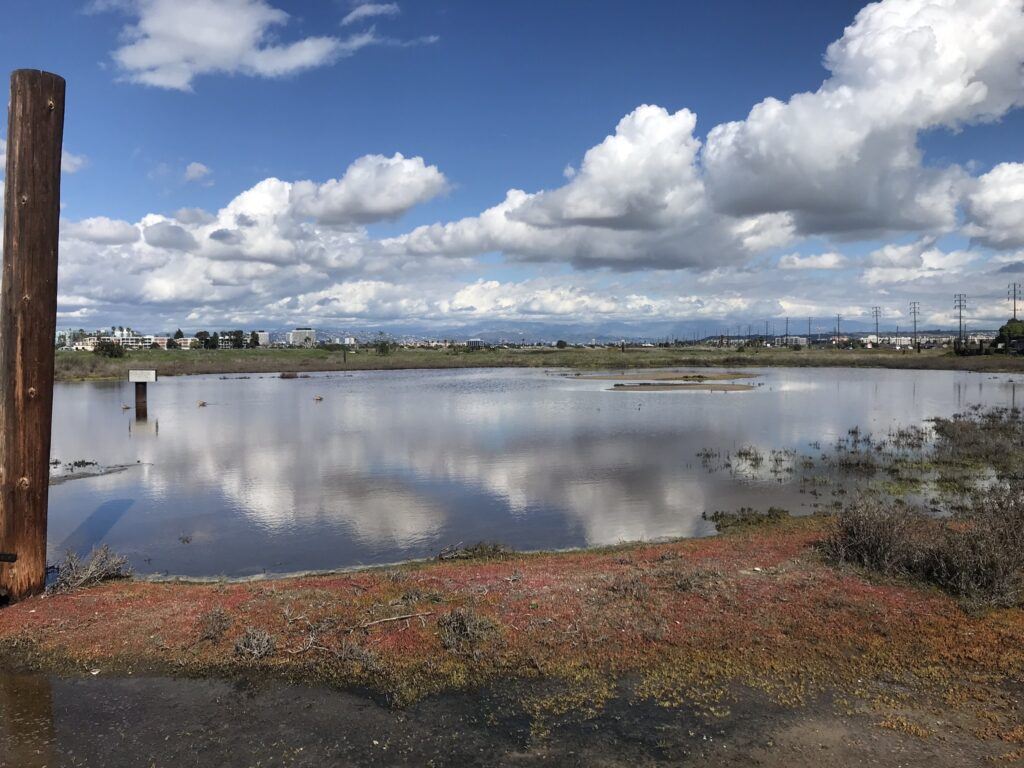
Restoration clash over Ballona Wetlands shows importance of nature in urban areas
Invasive plants cover the largest coastal wetland in Los Angeles County
Over the past 150 years, 95 percent of California’s coastal wetlands have been devastated by urban development, pollution and invasive species. The Ballona Wetlands Ecological Reserve, located just south of Marina del Rey, is no exception.
“It’s the second biggest open space in the city of Los Angeles,” said Thomas Gillespie, a professor in the Geography Department and Institute of the Environment and Sustainability at UCLA. “It has some of the rarest vegetation types and rarest coastal habitat in Los Angeles, but 85% of the wetlands are non-native species.”
The reserve was once a fully functioning, 2,100-acre coastal wetland. Today it resembles a 600 acre “weed lot,” Gillespie said. Ballona Creek, which used to flow naturally through the wetlands, was converted into a straight, cement channel in the 1920s. Three decades later, soil that supported native plant life began to dry up after 3.5 million cubic yards of fill was dumped on the wetlands during the construction of Marina del Rey. Invasive species began encroaching.
Wetlands provide valuable economic and ecological services such as improving pollution and flood control, increasing nutrient cycling, providing habitats for specific species — and as educational and recreational areas.
In 2017, a draft environmental impact report was released proposing four alternatives for restoration. But while local environmental groups and state agencies agree that the Ballona wetlands should be restored, they disagree intensely over how it should be done. For nearly four decades, this conflict has prevented any restoration at all.
Restoration is a messy process
The battle over Ballona began in earnest in 2003, when the State of California spent $139 million to purchase 192 acres of wetlands slated for development. About 300 more acres were donated to the state by the developer. The Ballona Wetlands Ecological Reserve was created with the intention to enhance the area, improve flood and storm water management and increase public access amenities.
Restoration is a complicated topic in general. Its dictionary definition is “returning something to a former condition.” To completely restore the wetlands, a large amount of fill would have to be removed and the levees that cement the creek taken out. But some environmental groups strongly oppose this idea.
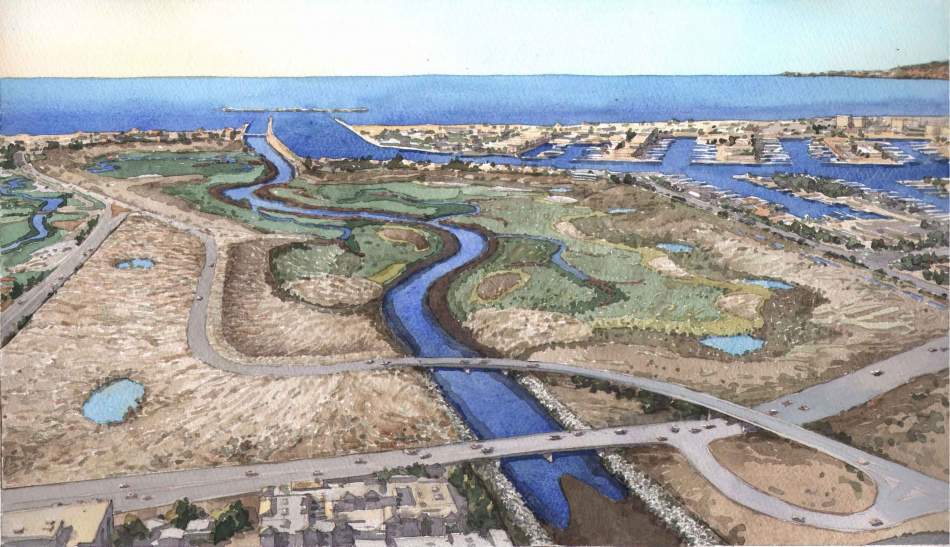
Travis Longcore, an expert in urban architecture and a UCLA assistant adjunct professor, was previously affiliated with the Los Angeles Audubon Society and the Urban Wildland Group. Both groups worry bulldozing the wetlands to remove the fill that was dumped there will destroy the habitat of endangered and threatened species.
“This land was purchased at great expense as a wildlife refuge,” Longcore said. “It wasn’t purchased as public open space, not as a city park, but as an ecological reserve. If you have specific endangered, threatened or at-risk species and you want them to thrive, you have to identify them and plan for them.”
The environmental impact report includes a proposal make the wetlands more accessible to the public by building a parking structure, bike paths and walking trails. That would defeat the purpose of the wetlands as a reserve for threatened species that thrive in increasingly rare coastal Californian ecosystems, Longcore said.
The Ballona Wetlands Ecological Reserve is one of the few natural areas remaining in Los Angeles. The debate over restoration is intense for a reason: there’s a lot at stake.
Different visions require different restoration approaches
Butterflies flit. Lizards scamper. Birdsong surrounds you. This heightened wildlife activity is due to the group Friends of Ballona Wetlands, which leads school groups and volunteers in restoration and education efforts in a small part of the wetlands. Patrick Tyrrell, the manager of Habitat Restoration and Upper Education for Friends of Ballona, says the group’s efforts have helped a species of butterfly come back from the brink of extinction.
“The El Segundo Blue Butterfly depends on a native plant called seacliff buckwheat. If you lose that plant, you lose the butterfly,” Tyrell said. “Our volunteers pulled out ice plant, which is initially which is an introduced species from South Africa, and planted native plants including the buckwheat. The butterfly came back.”
Successes like this bolster the state’s plan for comprehensive invasive species removal, and most groups are on board with this part of the proposal. However, other aspects of the proposed alternatives are more controversial.
Walter Lamb, executive director of Ballona Wetlands Land Trust, led litigation efforts to prevent construction of a parking garage and animal shelter on the wetlands. Like Longcore, he disagrees with the plan to make the wetlands tidal, but on the grounds that special interest projects are preventing agencies from supporting a fully science-based approach.
“Maybe are there some opportunities to increase tidal influence without doing a full dig-out of three million cubic yards,” Lamb said. “This issue is complex and we do not want to shy away from the complex discussion. We want to think of these solutions more like the cockpit in an airplane with a lot of different dials that you have to track.”
There is a fundamental agreement that restoration must be “science-based.” This type of approach means restoration can be rooted in the past by returning the wetlands to a pre-development state, or focused on the future by determining the most practical way to change what is currently present to be more functional. The devil is in the details.
“We need to recognize value of the contiguous open space we have here,” Lamb said. “And then we need to focus on what plants and wildlife species depend on certain habitats and make sure those species are protected and optimized to the maximum extent possible.”
Nathan Burke is an undergraduate geography student at UCLA conducting research at the wetlands. He said restoration could preserve the wetlands as a valuable educational tool.
“By removing non-natives, we can help preserve the natural habitat as it once existed,” Burke said. “The wetlands would gain ecological importance for native plant and animal species, and serve as an educational resource to understand our native ecology.”
The Ballona restoration battle highlights wetlands’ importance as a natural resource
The spectrum of agreement with the environmental report ranges among stakeholders from partial to outright. For years, these organizations with a vested interest in this natural area have been fighting through lawsuits and letters for their vision of restored wetlands.
If anything, this contentious disagreement highlights the importance of maintaining and preserving natural spaces in urban areas. Why else would people fight tooth and nail over an area that for years has been covered in invasive plants?
The Ballona Wetlands are the second largest natural area in the city of Los Angeles. Striking a balance between fully restoring native ecology and preserving it to an extent where humans are still allowed access is going to be challenging, but it is essential.
“Urban areas are where the people are,” Longcore said. “Unless we provide places for people to connect to and understand how the natural world works, we become more and more disconnected.”
Though they have different opinions on restoration, Longcore and Tyrell both care deeply about the reserve.
“We are surrounded by cars, roads, freeways, buildings, concrete and asphalt,” Tyrell said. “Every time I get to go outside and spend time with plants and birds and rabbits it’s rejuvenating. It’s even more so in a city like Los Angeles because we don’t have open spaces.”
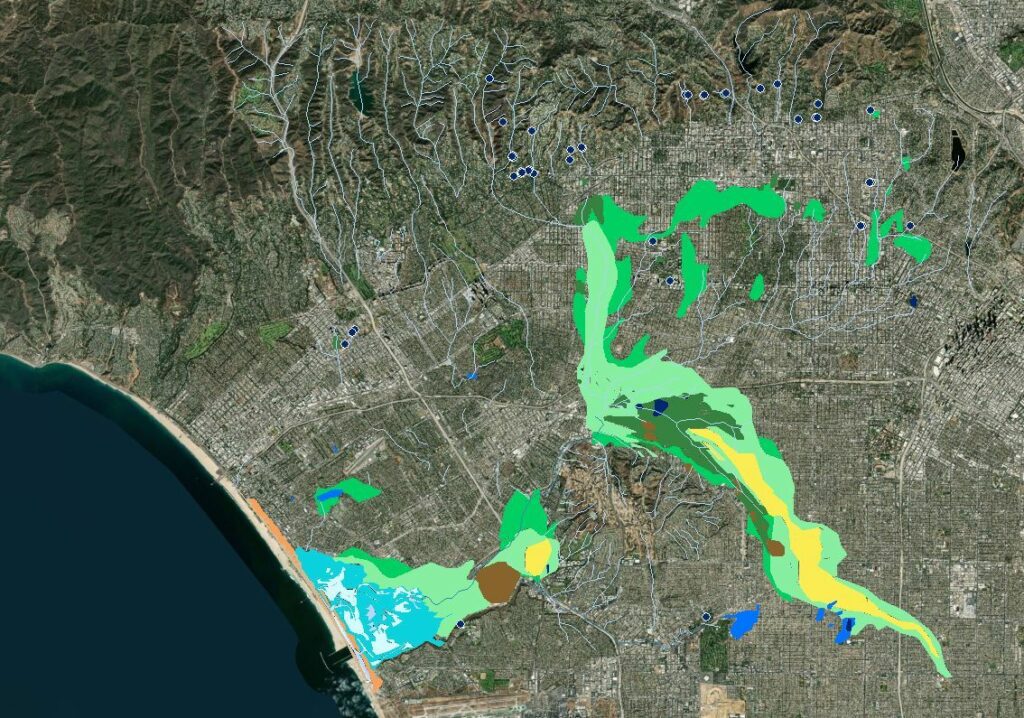
TOP IMAGE: Invasive plans like iceplant cover more than 70% of the wetlands immediately south of Marina del Rey. | Photo by Sonia Aronson.



